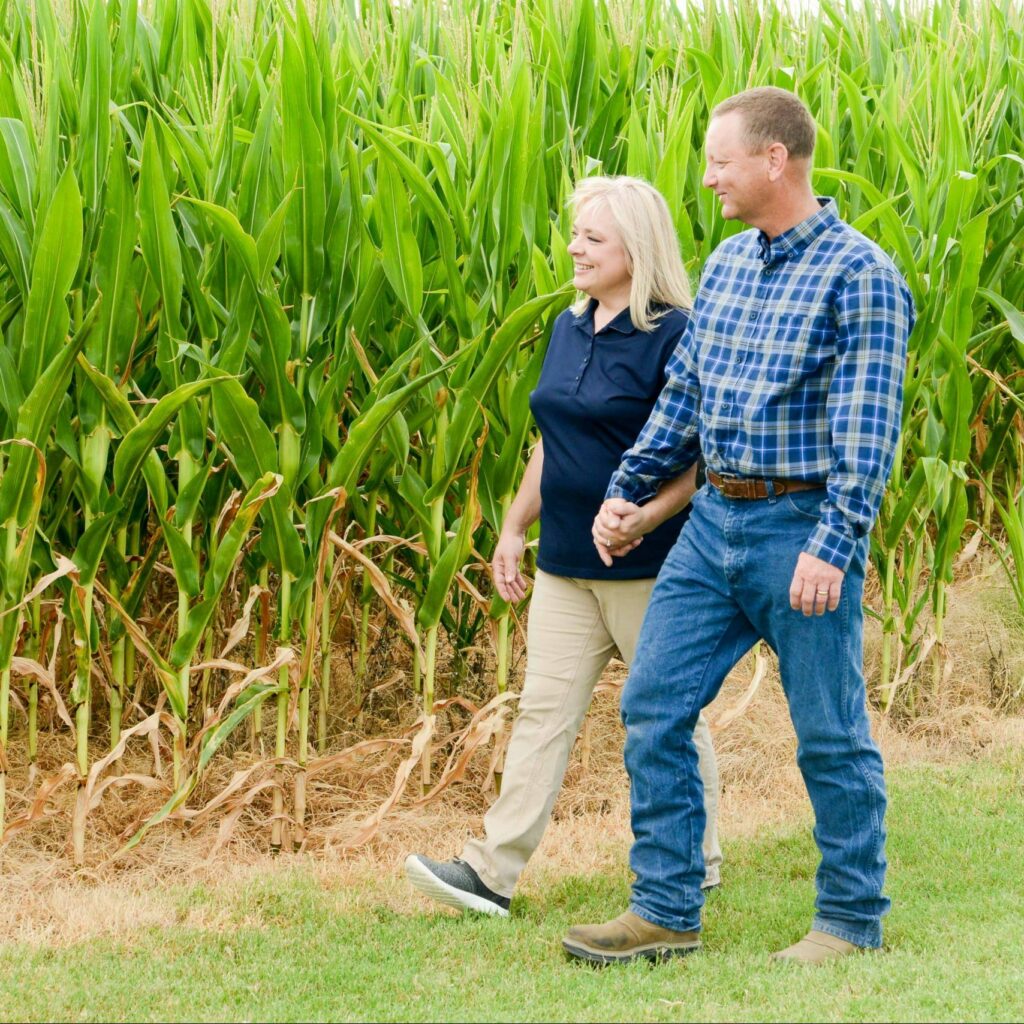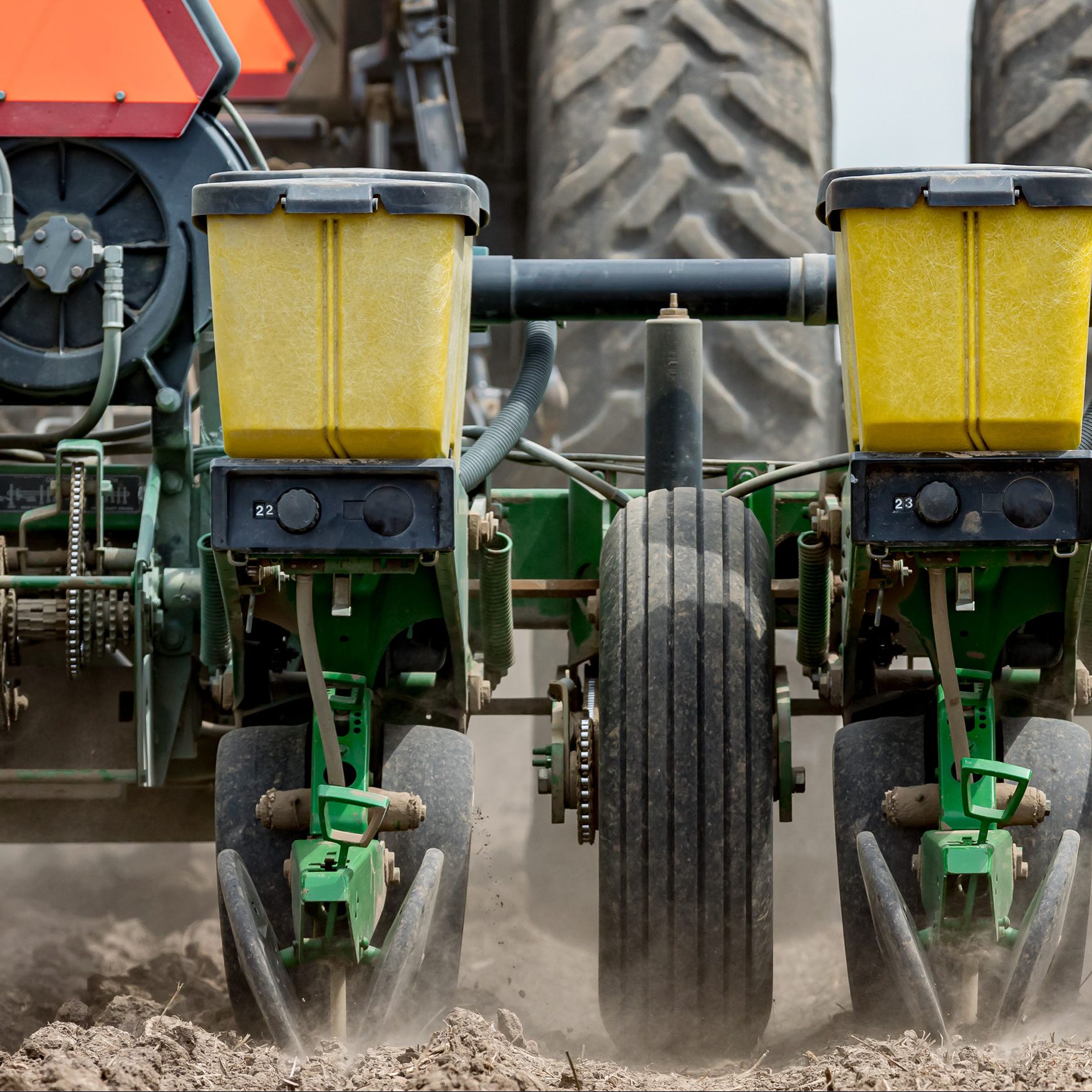Long before our food is harvested and makes its journey to our local grocery stores, farmers are hard at work planning and preparing for the upcoming season’s crop.
Going into pre-season, or the time before planting, one of the first decisions farmers must make is what crops to plant. Rodney Schronk and his wife Susan farm in Hill County, Texas, explain their decision to grow corn, cotton, wheat and sunflowers is complex. Rodney said there are three primary factors they take into consideration, including crop rotation, input costs in relation to commodity price, as well as their workforce.
Three Factors to Consider Before Planting
“We use a strict rotation where we try not to plant a single crop more than two or three years in a row on a particular piece of land,” Rodney said.
The Schronks know their crop rotation is important because it helps prevent disease and provides a degree of insect and weed resistance that can negatively impact a crop. Planting in a rotation also provides diverse nutrients for soil microbes since each type of crop has a different root system.
While they consider the input costs and potential selling price for a particular crop, Rodney said crop rotation also plays a more important role in their bottom line.
“The profitability of each crop, as weird as it sounds, is not as huge of a factor as rotation because, what we have found over time, is just following a fairly strict rotation tends to work better than trying to chase the market as to what’s the most profitable,” Rodney said.
The last factor they consider when choosing what to plant is their available workforce. Different crops are planted and harvested at different times during the year depending on geographic location. With only so much equipment and people to run the operation, Rodney said they strategically plant different crops throughout the year to keep their workforce and equipment operating as efficiently as possible.
After farmers decide what to plant and when, they begin preparing their fields for the upcoming planting season.
“If we narrow down the corn in particular, that process of planting begins almost six months to a year before we actually put the seed in the ground,” Rodney said.
Conservation From Start to Finish
Conservation is often woven into all stages of the crop production process, and in the case of the Schronks, it’s where their planting season for corn begins.
“When we’re harvesting the previous crop, the combine is actually starting to prepare the field for the next year,” he said.
Rodney said their combine, which is used to harvest the crop, chops up the residue from the previous year’s crop and spreads it across the field, ultimately boosting soil health for the next crop. Not only does the residue on the soil surface provide a food source for soil microbes, but it also helps reduce erosion of precious topsoil, the most productive layer of soil that contains organic matter. Crop residue also helps soil retain moisture, which is crucial for the Schronk’s dryland farm where crops rely on mother nature for rainfall.


Much like reading the nutrition label on the back of a food product at the grocery store, Rodney said it is important to assess the nutrient content of the plant’s source of food – the soil.
“What we do is actually take samples of soil throughout the field, send it to a laboratory and analyze that soil to get that ‘food label,’” he said.
Just as humans need certain supplemental vitamins and minerals to be healthy, farmers must provide the soil key nutrients like nitrogen, phosphorus, potassium and zinc in the form of fertilizer to stimulate growth of a healthy crop.
In preparation for fertilizer application and planting, Rodney said they use their strip-till rig system that uses a knife apparatus such as a fertilizer injection shank. In the fall, this machine minimally tills rows about six inches wide and 4-8 inches deep in the field, careful to not disturb residue in between the rows. With the soil sample results from the laboratory in hand, Rodney said they apply nitrogen, phosphorus and potassium into the soil with a precise prescription using a Real Time Kinetics (RTK) guidance system. Proper application paired with healthy soil also helps prevent runoff, and ultimately, soil erosion.
“This system drives that tractor and places nutrients within an inch of where the seed will be the next spring,” Rodney said.
During the winter, he said they typically apply herbicide to their fields to prevent weeds from robbing nutrients from the upcoming crop.
Planting Process
For the Schronks in Central Texas, the planting process begins in late February where they have a tight window of time to get their corn planted in ideal environmental conditions. Rodney said planting needs to happen as early as possible to avoid the harsh summer heat during critical growth periods, while also taking care not to plant too early when frost and freezes can be damaging to young plants.
“There’s been days throughout my career where we may work 24 hours a day for four or five days in a row, trying to hurry up and get it done. It’s all hands-on deck,” Rodney said.
First, he said seeds are passed through a screen to remove any trash, or plant residue. Then the seed is placed into a hopper on the row unit, which is attached to a tractor. As the tractor makes its way down the field, mechanisms in the row unit cut small trenches in the ground, place the seeds and then cover the seed with soil.
While seed placement can be subjective, Rodney said it is important to be consistent so plants can grow to be productive. Technology allows him to watch placement in real-time to ensure their seeds are spaced 5-8 inches apart and make adjustments if necessary.
Soon after the seed sprouts and forms roots, Rodney explained it’s critical to apply more nitrogen. Using the planter, they apply drops of nitrogen adjacent to the seedlings.
“As soon as it rains, that nitrogen follows the water down and will go into the root zone where it has the nitrogen from last fall. The roots can grab the zinc, phosphorus and potassium that we put out. So, it has everything it needs to get going and be healthy,” Rodney said.
Corn typically takes approximately 120-150 days to reach maturity. However, different corn hybrids can take varying lengths of time to reach maturity. Corn harvest on the Schronk’s farm typically takes place in August, when they will begin preparing for the next crop all over again!
At the end of the day, farmers consume the same food and water we all do.
“We eat what we grow,” Susan Schronk said.
Rodney and Susan, like many farmers, are truly passionate about what they do – caring for the land and their crops from planting to harvest.
